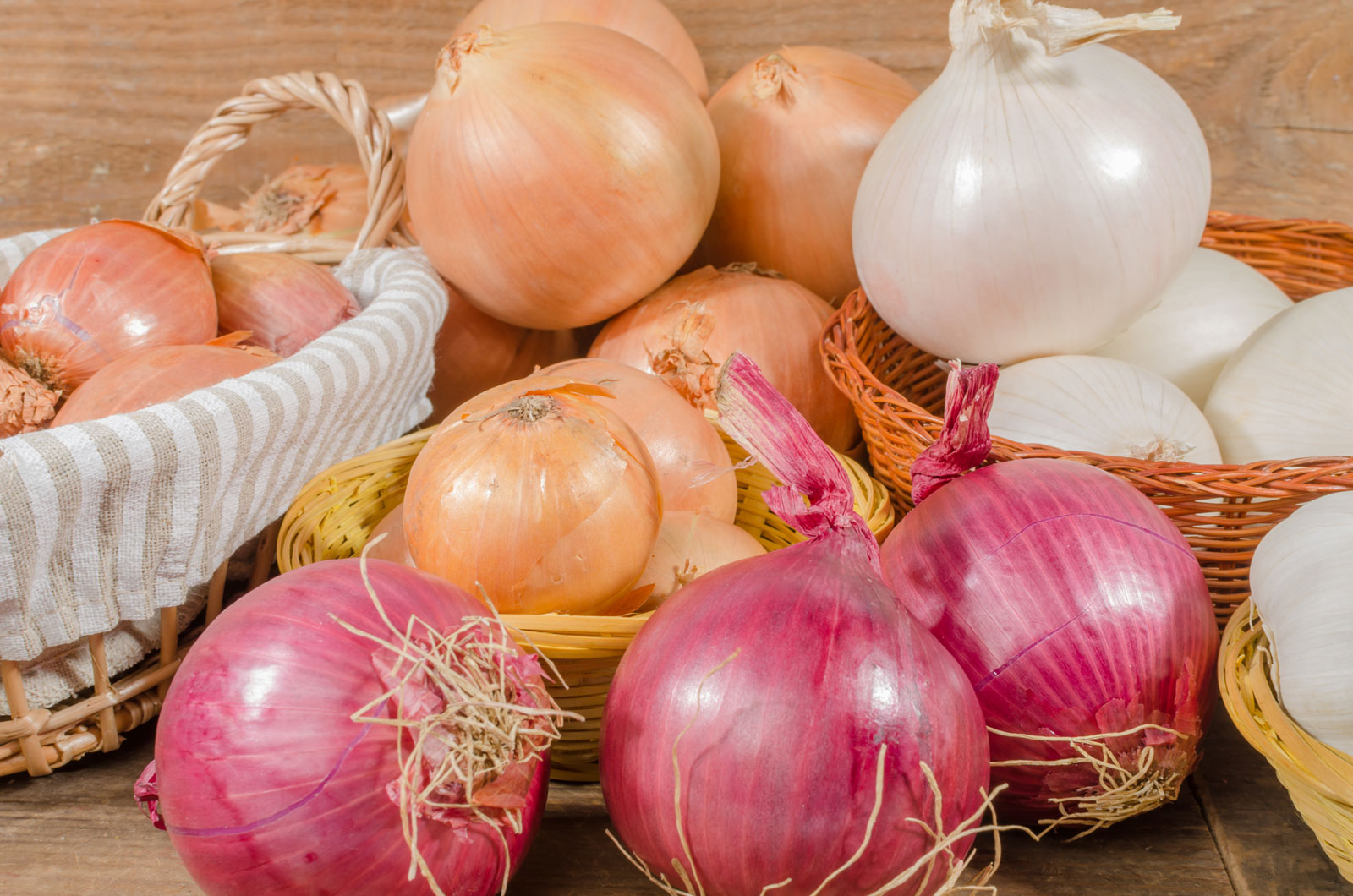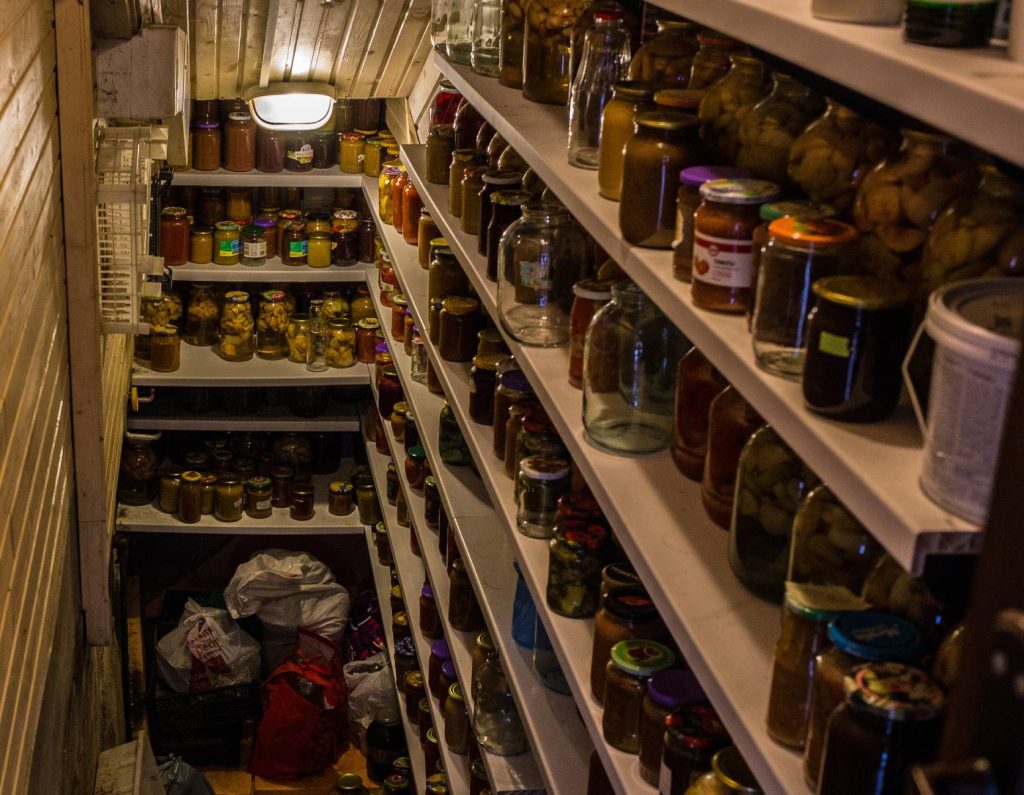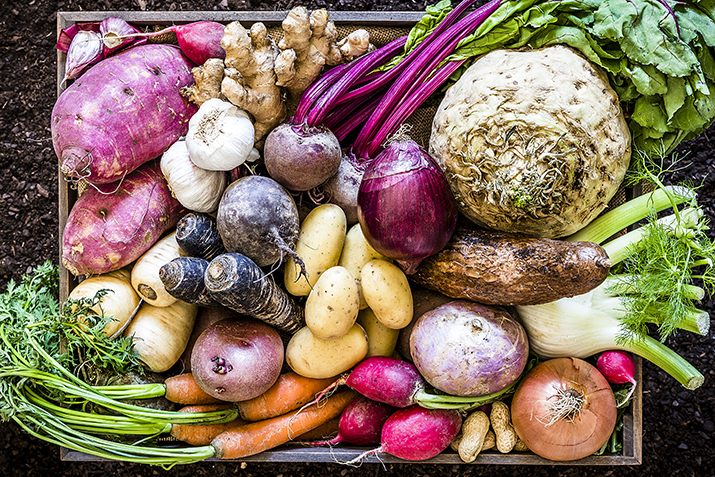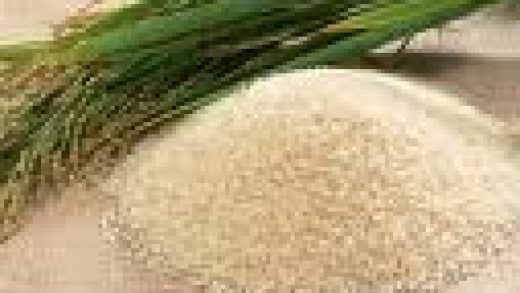The term “root cellar” refers to an underground storage area where fruit and vegetables that didn’t spoil so quickly could be stored. It was cool and dark, an ideal place for root vegetables, often the only food available in winter or during drought. It was protected from the heat of summer and from the cold of winter, usually keeping an even temperature all year. It was one of two ways before refrigeration people in rural areas had to keep things cool. The other was a stream box or stream chest, a slatted box with a lid that allowed extra milk, butter and eggs to be stored in a nearby creek or stream and kept cool for a few days. The money earned from these extra foods was called butter and egg money, which later referred to what was saved from the household budget.
For today’s bachelor, living in a small apartment makes finding a good spot to store root vegetables important and sometimes difficult. These vegetables like it cool, but not cold, so the refrigerator is not the best place for them. You might see them proudly displayed in a bowl or basket on the countertop in magazines and on the television. But all that light is not good for them either. The modern root cellar needs to be dark and away from heat. A closet floor is one great spot to have your own root cellar.
The Wide World of Root Vegetables
Root vegetables can be kept for several months in a cool, dark environment. These include carrots, potatoes, onions, garlic, turnips, radishes, parsnips and rutabagas. Celery, rhubarb, beets, apples, home-canned foods, and smoked meats could also be stored in a root cellar. Every kitchen should have at least a few basics in their pantry.
The Basic Necessities To Always Have On Hand

Potatoes. This is America’s favorite vegetable. It is often served at every meal. It is as much a staple of our cuisine as bread. It can be served in a wide variety of ways. These tubers are members of the same family as nightshade, henbane, and tobacco. The leaves and seeds of the plant are poisonous. The tubers can be poisonous in their raw state, with dangerous compounds lying beneath the skin. Cooking or high heat will render those compounds safe.
Potatoes originated in South America and were first cultivated by the Incas. There are more than 4,000 varieties grown all around the world. They can be baked, fried, boiled, steamed, roasted, and cooked in any way you can imagine. The skin, well cleaned, is safe to eat and can improve the nutritional quality of potatoes. Nutritionally, potatoes are loaded with vitamins, minerals, carbohydrates, fiber, and phytonutrients, but very little protein.

Onions. Like potatoes, these root vegetables come in many varieties, and sizes and can be applied to many uses. These days, we mostly use onions as a seasoning or flavor enhancer. Onions are not tubers but are bulbs that have been used in cooking since their earliest known human civilizations. It can be eaten raw or cooked or dried. It goes with almost all foods, cuisines, and dishes. It is a basic flavoring in French cuisines’ mirepoix, a mixture of finely chopped onions, carrots, and celery used as a base for most dishes. Onions contain a sulfurous compound that creates an irritating gas when cut. Learning to cut onions efficiently and quickly can reduce exposure to this tear-inducing gas. Shallots, leeks, and scallions (green onions) are also a part of this group but are not stored for as long as most common onions.
Garlic. This is also a member of the onion family. It has many uses in both cooking and medicine. The garlic bulb is divided into several sections, called cloves. It is used in a wide variety of cuisines and cooking styles. It is believed to have originated in Southeast Asia, but it has been used for so long in so many parts of the world that scholars cannot pinpoint its source. In the United States, most garlic comes from the town of Gilroy, California. Having been there, I can assure you that the aroma of garlic can be detected for many miles around this coastal town. China is the largest global producer of garlic.
It is a must for cooking because it adds a huge amount of flavor and can save many dishes from being bland. Unlike potatoes, garlic should be stored at room temperature and dry to keep it from sprouting. Peeled garlic should be stored in wine or vinegar in the refrigerator. Be careful of using garlic to flavor stored oils, as it can create a dangerous mold that will make people sick. It has been claimed to be beneficial in the treatment of high cholesterol, high blood pressure and heart disease, but this has not been confirmed in medical studies. It has been found to have an antibacterial quality which can be used to treat wounds and infections. Garlic also causes bad breath and smelly sweat due to a gas produced in the blood during digestion.





